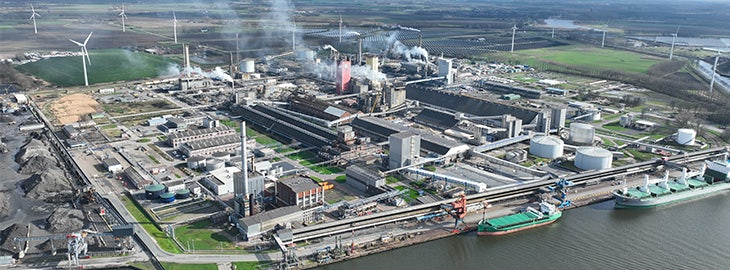The fertilizer industry is essential for global agriculture, supplying the nutrients necessary to grow crops and sustain food production. With the increasing global demand for fertilizers, plants must operate safely, reliably, efficiently, and continuously. The machinery involved in fertilizer production, such as steam turbines, compressors, and granulators, operate under continuous conditions. For some of these machines, it is crucial to implement overspeed protection and speed monitoring to ensure uninterrupted and safe operations.
Overspeed protection: preventing catastrophic failures in fertilizer plants
Overspeed protection systems are essential for safeguarding rotating machinery from exceeding critical speed limits, which could lead to hazardous situations, significant mechanical failures, and extensive damage.
In the high-risk environment of fertilizer production, where multiple hazardous substances are present, the importance of overspeed protection cannot be overstated. Overspeed protection is namely applied to the key drivers of fertilizer production, like steam- or gas turbines. An overspeed incident on these machines poses a serious safety risk to nearby personnel and equipment. The safety risk in the fertilizer industry is even greater because of the nearby hazardous substances like ammonia and nitric acid. An accident involving these substances can greatly increase the environmental impact and scale of the circumstances.
Steam- and gas turbines are the driving force of the plant, this means that if these machines come to a halt, the rest of the production isn’t able to proceed. This can cause problems in the machines themselves, and also with the production targets of the fertilizers. Maintaining continuous production is crucial.
In many cases, overspeed protection is a regulatory requirement. For example, machinery must comply with standards such as API Standard 670, which is an industry standard and describes the minimum requirements for a machine protection system. The API Standard mandates overspeed detection systems for critical rotating equipment. It also mandates a minimum response time for an overspeed protection system of 40 milliseconds. Various overspeed detection options exist, with electronic systems providing faster response times and higher reliability compared to mechanical systems.
Key benefits of overspeed protection in fertilizer plants
- Preventing mechanical damage: Overspeed events can cause severe mechanical damage to equipment, leading to long downtimes and high maintenance costs. By implementing overspeed protection, plants safeguard critical machinery, reducing the likelihood of costly repairs and parts replacement.
- Ensuring worker and environment safety: Overspeed protection helps prevent the kind of mechanical breakdowns that could lead to parts failure or detachment, creating potential hazards for nearby personnel and the environment.
- Minimizing downtime and meeting production targets: Given the competitive and time-sensitive nature of the fertilizer industry, production delays due to equipment failure can result in missed deliveries and breaches of contract. Overspeed protection ensures the continuous, safe operation of machinery, reducing the likelihood of downtime and associated financial impacts.
Read about the causes of overspeed »
Speed monitoring: ensuring continuity and safety in fertilizer plants
Fertilizer production involves highly automated processes, each with stringent requirements for consistent operation and product quality. To meet these demands, it’s essential to monitor the speed of high-speed rotating machinery such as steam- or gas turbines. Speed monitoring can also be important for lower-speed machinery like; rotary granulators, compressors, mixers, and even conveyor belts. These machines are not only needed in the production process but also impact the quality, consistency, and safety of the final product.
Speed monitoring systems can be used for a variety of needs, including reverse rotation, standstill or creep, and underspeed. Monitoring for these conditions is essential because each condition can cause damage to the machine or create an unsafe working environment. For example, creep or reverse rotation can cause mechanical damage, interrupt processes, or create safety risks if left unmonitored.
Learn more about how these conditions arise and what the consequences are: 5 speed-related failures with rotating machinery »
Conclusion
The implementation of overspeed protection and speed monitoring systems in fertilizer plants is not optional; it’s essential. These systems increase safety by preventing hazardous incidents linked to mechanical failures, ensuring that personnel and surrounding environments are protected. By maintaining precise speed, these systems also play a crucial role in upholding product quality, as they ensure that critical machinery operates within the parameters necessary for consistent output.
In an industry where uninterrupted operations are key to meeting supply commitments and maintaining plant profitability, investing in overspeed protection and speed monitoring systems not only safeguards operational continuity but also strengthens the plant’s reputation for reliability and quality.
Learn more about optimizing operational safety and availability of fertilizer plants »

